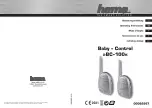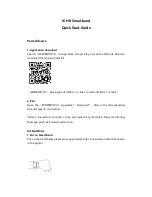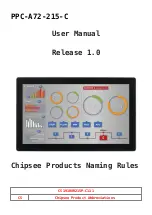
English-16
Connections
NOTE:
Do not connect or disconnect cables when turning on the monitor’s main power or other external equipment’s power
as this may result in a loss of image.
NOTE:
Do not use an attenuating (built-in resistor) audio cable. Use an audio cable without a built-in resistor. Using an audio
cable with a built-in resistor will lower the sound level.
Before making connections:
* Turn off the device’s power before connecting it to the monitor.
* Refer to the device’s user manual for available connection types and instructions for the device.
* We recommend turning off the monitor’s main power before connecting or disconnecting a USB storage device or a microSD
memory card to avoid data corruption.
Wiring Diagram
USB1
USB2
USB CM1 (2A)
USB CM2
USB MP
Dotted lines = other signal
Solid lines = video signal
Dashed lines = audio signal
USB storage device
Stereo Amplifier
USB port
(Type-A)
USB devices
such as
USB camera or
USB memory
Devices that
require power
supply:
Ex:
MultiPresenter
Stick
USB port
(Type-B)
USB cable
Computer (USB)*
1
AV Amplifier
DVD Player
(HDMI)
DVD Player or
Computer
DVD Player (HDMI) or
Computer (HDMI)
DVD Player
(HDMI)
AV
Amplifier
Computer (DisplayPort)
Computer (DisplayPort)
Second monitor*
Computer
DVD Player
Stereo Amplifier
VCR player or DVD player
*: Multiple monitors that are daisy-chained have a limit to the connectable monitors.
*1: The device connected to USB2 can control the device connected to USB1.
















































